
 Solves Eulerís equations (inviscid flow) and plots the pathlines. The vortex effects are found using the Biot-Savart law. The differential equations are solved using the Adams Bashforth method.
Solves Eulerís equations (inviscid flow) and plots the pathlines. The vortex effects are found using the Biot-Savart law. The differential equations are solved using the Adams Bashforth method.
Matlab code:
dt=0.01; rcore=0.1; dz0=0; Klist=[1,-1,1,-1];
zlist=[-1-0.5i,-1+0.5i,-0.5-0.5i,-0.5+0.5i]; i=length(Klist)+1;
for x=-1:0.1:1; for y=-1:0.1:1; zlist(i)=x+1i*y; i=i+1; end; end;
n=length(zlist);
for i=1:n; for j=1:10; paths(i,j)=zlist(i); end; end;
for t=1:85;
for i=1:n; dz(i)=0; for j=1:length(Klist); if(zlist(i)!=zlist(j)); r2=abs(zlist(i)-zlist(j))^2;
dz(i)=dz(i)+1i*Klist(j)*(zlist(j)-zlist(i))/r2*(1-exp(-r2/rcore^2));
end; end; end;
zlist=zlist+dt*(1.5*dz-0.5*dz0); dz0=dz;
hold on;
for i=1:n; temp=cat(2,zlist(i),paths(i,:)); temp(11)=[]; paths(i,:)=temp;
plot(real(temp),imag(temp));
end;
axis([-1,1,-1,1]); axis square; hold off;
end;
Mathematica code:
(* runtime: 19 seconds *)
ToPoint[z_] := {Re[z], Im[z]};dt = 0.01; rcore = 0.1; dz0 = 0; Klist = {1, -1, 1, -1};
zlist = Join[{-1 - 0.5I, -1 + 0.5I, -0.5 - 0.5I, -0.5 + 0.5I}, Flatten[Table[x + I y, {x, -1, 1, 0.1}, {y, -1, 1, 0.1}], 1]];
paths = Map[# Table[1, {10}] &, zlist];
Do[dz = Map[Sum[zj = zlist[[j]]; If[# != zj, r2 = Abs[# - zj]^2; I Klist[[j]](zj - #)/r2 (1 -Exp[-r2/rcore^2]), 0], {j, 1, Length[Klist]}] &, zlist]; zlist += dt (1.5dz - 0.5dz0); dz0 = dz; paths = Table[Prepend[Delete[paths[[i]], -1], zlist[[i]]], {i, 1, Length[zlist]}];Show[Graphics[Map[Line[Map[ToPoint, #]] &, paths], PlotRange -> {{-1, 1}, {-1, 1}}, AspectRatio -> Automatic]], {85}];
|
 Vortex Outside Cylinder.
Vortex Outside Cylinder.


 Two Vortices Outside Cylinder.
Two Vortices Outside Cylinder.
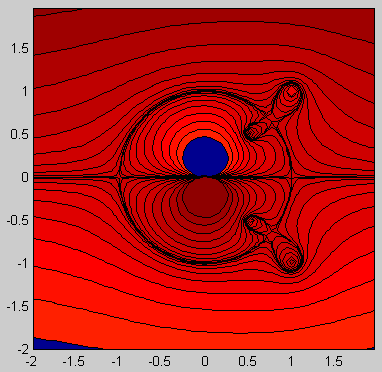 Cylinder with Outside Vortices.
Cylinder with Outside Vortices.
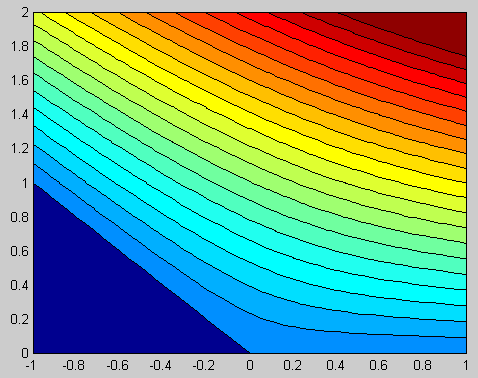 Corner Flow.
Corner Flow.
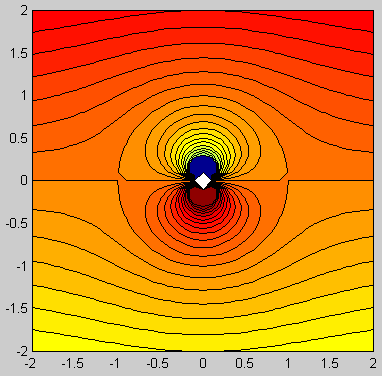 Cylinder.
Cylinder.
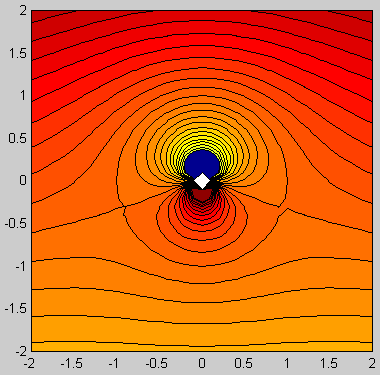 Lifting Cylinder.
Lifting Cylinder.
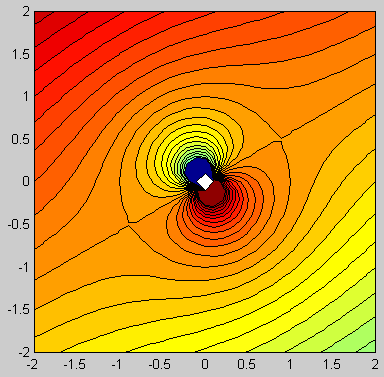 Cylinder with Angle of Attack.
Cylinder with Angle of Attack.
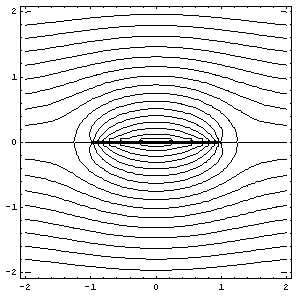 Rankine Oval.
Rankine Oval.
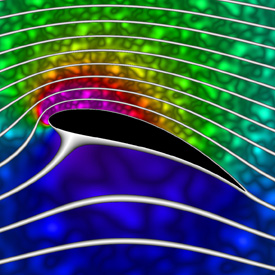


 Schwarz Christoffel Source.
Schwarz Christoffel Source.
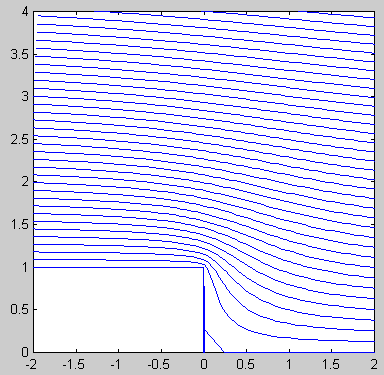 Schwarz Christoffel Step.
Schwarz Christoffel Step.

 Solves Eulerís equations (inviscid flow) and plots the pathlines. The vortex effects are found using the Biot-Savart law. The differential equations are solved using the Adams Bashforth method.
Solves Eulerís equations (inviscid flow) and plots the pathlines. The vortex effects are found using the Biot-Savart law. The differential equations are solved using the Adams Bashforth method.